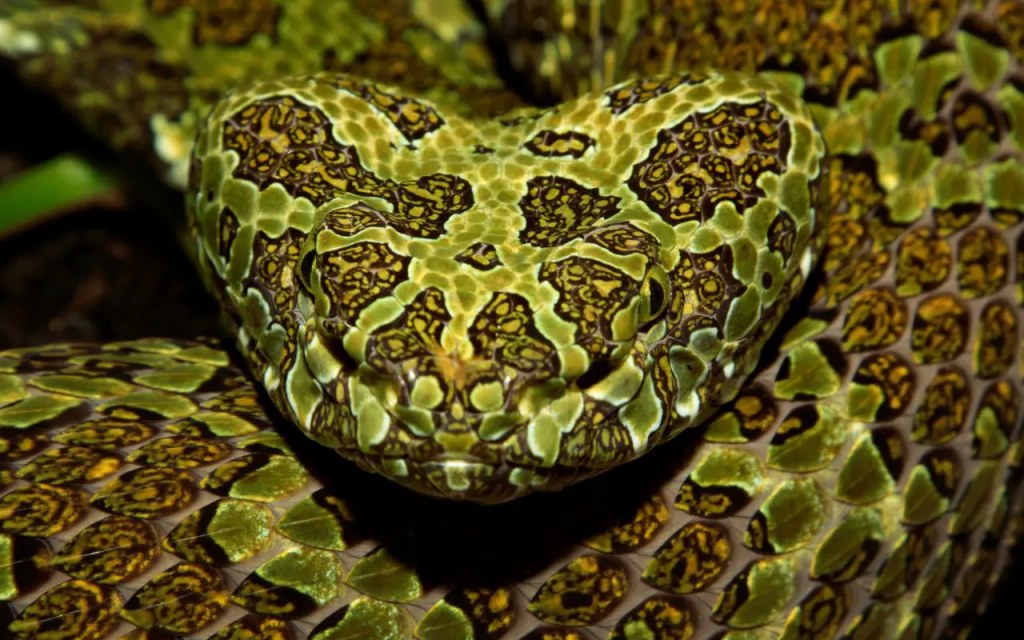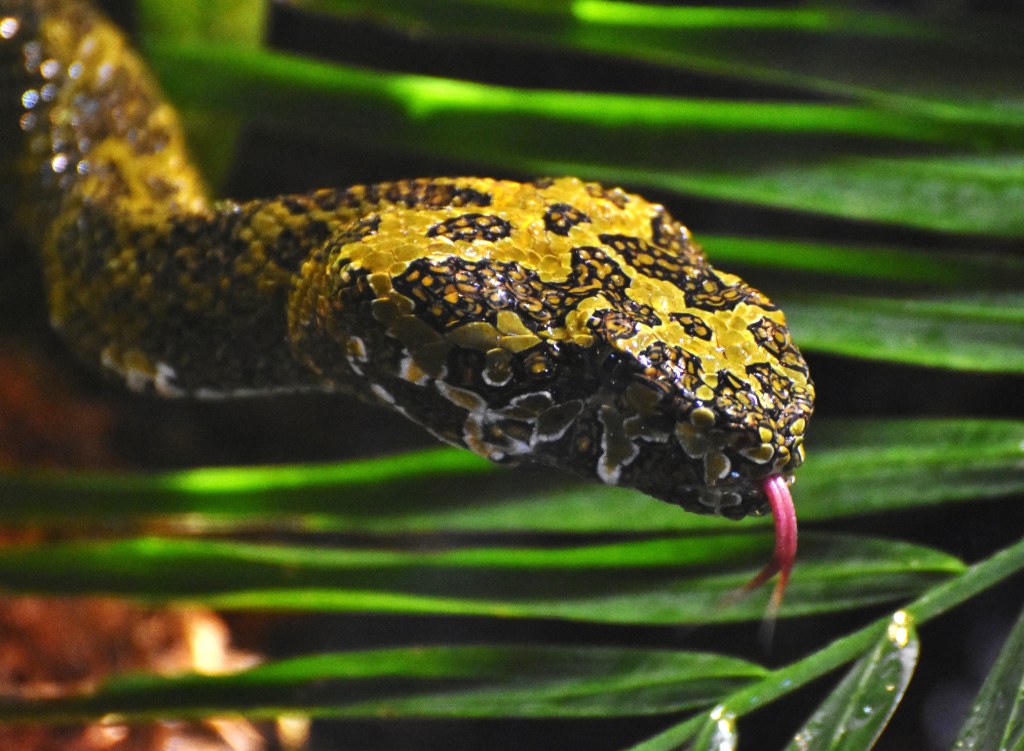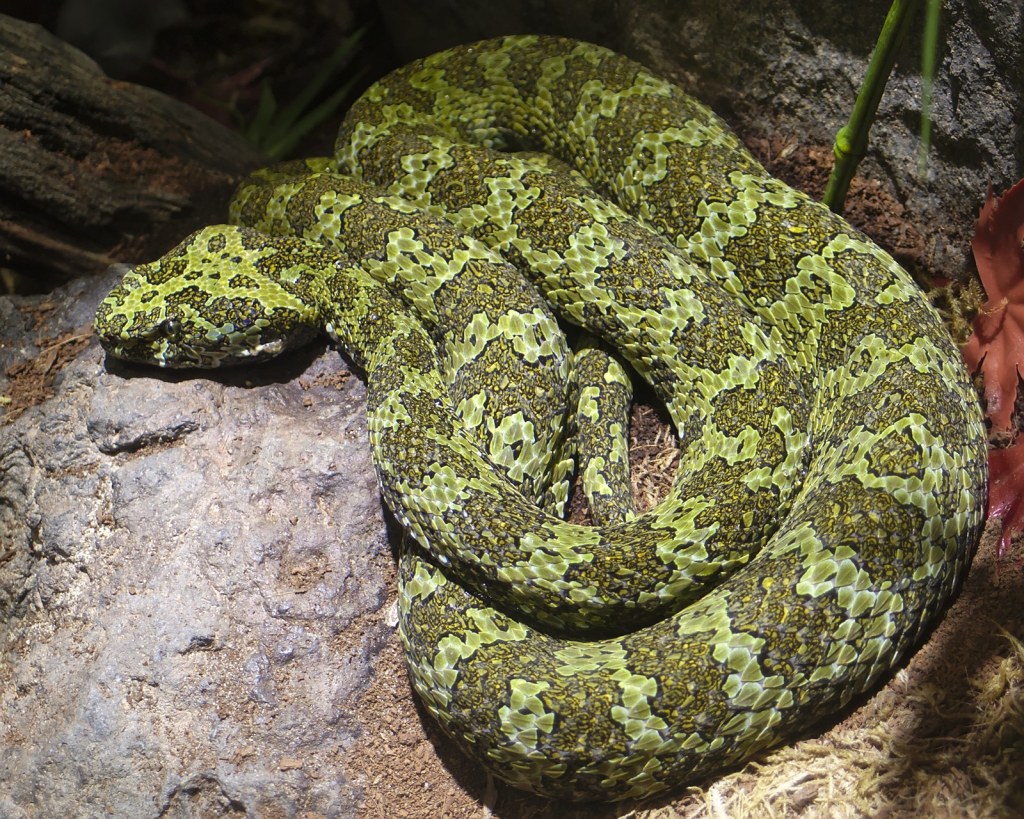Unveiling The Potent Power Of Mangshan Pit Viper Venom: Discover Nature’s Hidden Gem With A Single Click!
Mangshan Pit Viper Venom: A Fascinating Venom with Deadly Effects
Introduction
Welcome, Racing Enthusiast, to an intriguing world of venomous creatures and their potent toxins. Today, we delve into the depths of the Mangshan Pit Viper Venom, an enigmatic substance that has amazed scientists and intrigued nature enthusiasts alike. In this article, we will explore the characteristics, effects, and potential uses of this venomous secretion from the Mangshan Pit Viper, a snake species native to China. Brace yourself for a captivating journey through the world of venom!
3 Picture Gallery: Unveiling The Potent Power Of Mangshan Pit Viper Venom: Discover Nature’s Hidden Gem With A Single Click!



Overview: What is Mangshan Pit Viper Venom?
The Venomous Secretion: Mangshan Pit Viper Venom is a complex cocktail of proteins, enzymes, and peptides that the snake injects into its prey through its fangs. This venom is primarily used by the snake to immobilize and digest its victims.

Image Source: ballpythonbreeder.co.uk
Deadly Effects: The venom of the Mangshan Pit Viper is known for its potent cytotoxicity, which causes severe tissue damage and disrupts various physiological processes in the victim’s body.
Composition: The venom consists of a variety of components, including metalloproteinases, serine proteases, phospholipases, and peptides. Each component plays a specific role in the venom’s overall effect.

Image Source: i0.wp.com
Mangshan Pit Viper: This venom is extracted from the Mangshan Pit Viper (Protobothrops mangshanensis), a venomous snake species found in the mountains of China.
Medical Significance: Researchers believe that the venom of the Mangshan Pit Viper holds potential for the development of new drugs and treatments for various medical conditions.

Image Source: wikimedia.org
Conservation Status: Due to habitat loss and illegal poaching, the Mangshan Pit Viper is considered a vulnerable species, highlighting the importance of understanding and protecting this remarkable snake.
Research and Ethical Considerations: The study and extraction of venom from snakes raise ethical concerns and require careful handling to ensure the well-being of both the snakes and the researchers involved.
What Makes Mangshan Pit Viper Venom Unique?
Molecular Complexity: Mangshan Pit Viper Venom possesses a complex combination of proteins and peptides that contribute to its potent effects. The diversity of molecules present in the venom makes it a subject of great interest for scientific research.
Fast-Acting Nature: The venom of the Mangshan Pit Viper acts rapidly upon injection, causing immediate damage to the victim’s tissues, leading to paralysis and potential death.
Adaptability: The Mangshan Pit Viper is known to modify the composition of its venom based on its diet, environment, and other factors. This adaptability allows the snake to optimize its venom’s effectiveness for capturing prey.
Distinctive Venom Components: Researchers have identified unique proteins and peptides in the venom of the Mangshan Pit Viper that have shown promising effects in various medical applications, including antimicrobial and anticancer properties.
Evolutionary Significance: The study of Mangshan Pit Viper Venom provides valuable insights into the evolution of venomous snakes and the intricate mechanisms these creatures have developed to overcome their prey.
Potential Therapeutic Uses: Scientists are exploring the potential of Mangshan Pit Viper Venom components in developing novel drugs for conditions such as hypertension, blood clot prevention, and chronic pain management.
Challenges in Venom Research: The isolation and study of venom components are complex processes that require advanced laboratory techniques and ethical considerations to ensure the safety of researchers and the snakes involved.
Who Studies Mangshan Pit Viper Venom?
Herpetologists: These scientists specialize in the study of reptiles and amphibians, including venomous snakes like the Mangshan Pit Viper.
Toxicologists: Experts in toxicology examine the effects of venom on living organisms and study its composition to understand its potential applications and hazards.
Pharmacologists: These researchers investigate the effects of venom components on biological systems and explore their potential use in drug development.
Biomedical Researchers: Scientists in this field study venom components to identify their therapeutic potential and develop treatments for various medical conditions.
Conservation Biologists: These specialists focus on protecting endangered species like the Mangshan Pit Viper and their habitats, working to ensure their survival for future generations.
Medical Professionals: Physicians and healthcare providers benefit from the research conducted on venom to better understand its effects on human health and improve treatment strategies.
Scientists and Enthusiasts: Researchers, nature enthusiasts, and individuals interested in understanding the fascinating world of venomous creatures contribute to the study and appreciation of Mangshan Pit Viper Venom.
When and Where Can You Find Mangshan Pit Viper Venom?
Geographical Distribution: The Mangshan Pit Viper is endemic to the southern regions of China, primarily inhabiting the Mangshan Mountain range in Hunan Province.
Seasonal Activity: These snakes are most active during the warmer months of the year when prey availability is high, typically from spring to autumn.
Snake Venom Extraction: Venom extraction from Mangshan Pit Vipers is carried out by trained professionals under controlled conditions in captivity, ensuring the safety of both the snakes and the researchers.
Snake Venom Research Facilities: Specialized research institutions and laboratories worldwide engage in the study of snake venom, including the venom extracted from the Mangshan Pit Viper.
Conservation Efforts: Conservation organizations and local authorities in China work together to protect the natural habitats of the Mangshan Pit Viper and preserve its population.
Captive Breeding Programs: To support research and conservation efforts, some institutions maintain captive populations of Mangshan Pit Vipers, ensuring a sustainable source of venom for scientific study.
Travel Considerations: If you plan to visit the Mangshan Mountain range or encounter Mangshan Pit Vipers, it is crucial to prioritize safety, respect the animals’ natural habitats, and follow local regulations.
Why is Mangshan Pit Viper Venom Important?
Scientific Research: The study of Mangshan Pit Viper Venom provides invaluable insights into venom evolution, the development of novel drugs, and an understanding of how organisms adapt to their environments.
Medical Applications: Venom components from the Mangshan Pit Viper show potential in developing treatments for various medical conditions, including cancer, cardiovascular diseases, and neurological disorders.
Conservation Significance: By studying Mangshan Pit Vipers and their venom, researchers gain a deeper understanding of these unique creatures, helping to inform conservation efforts and protect their fragile ecosystems.
Educational Value: Knowledge about Mangshan Pit Viper Venom enriches our understanding of the natural world and promotes awareness about the importance of conserving biodiversity.
Source of Inspiration: The remarkable adaptations and abilities of venomous snakes, including the Mangshan Pit Viper, have inspired scientific breakthroughs and technological advancements, such as the development of antivenoms and drug delivery systems.
How is Mangshan Pit Viper Venom Extracted and Studied?
Venom Extraction Process: Specially designed tools and techniques, such as snake handling equipment and electric stimulation, are used to collect venom from Mangshan Pit Vipers without harming the snake.
Storage and Preservation: Venom samples are stored in specialized containers and frozen to maintain their potency for further analysis and experimentation.
Laboratory Analysis: Scientists employ advanced analytical techniques, including mass spectrometry, DNA sequencing, and protein assays, to identify and characterize the various components of Mangshan Pit Viper Venom.
Functional Studies: Researchers conduct experiments to evaluate the effects of venom components on cells, tissues, and organisms, helping to uncover their potential medical applications.
Drug Development: Venom components showing therapeutic potential are further studied and modified to develop drugs that can be used to treat specific diseases and conditions.
Animal Ethics and Welfare: Researchers follow ethical guidelines to ensure the well-being of the snakes involved in venom extraction and minimize any potential harm during scientific study.
Pros and Cons of Mangshan Pit Viper Venom
Pros:
Potential for developing innovative medications
Source of valuable scientific knowledge
Promotes conservation efforts for the species
May inspire advancements in biotechnology and drug delivery systems
Offers insights into venom evolution and adaptation
Cons:
Potential ecological impact if overexploited
Ethical considerations in venom extraction and research
Dangerous and potentially life-threatening if mishandled
Challenges in obtaining venom from wild populations
Requires specialized knowledge and facilities for safe handling
Frequently Asked Questions About Mangshan Pit Viper Venom
1. Is Mangshan Pit Viper Venom fatal to humans?
While Mangshan Pit Viper Venom can be life-threatening, fatalities are relatively rare. Prompt medical attention and administration of appropriate antivenom can significantly improve the chances of survival.
2. Can Mangshan Pit Viper Venom be used to develop antivenom?
Yes, venom from the Mangshan Pit Viper and other venomous snakes is utilized to create antivenom, which is crucial for treating snakebite victims and neutralizing the effects of venom.
3. Are there any alternative uses for Mangshan Pit Viper Venom?
Research is ongoing to explore the potential use of venom components in developing new drugs for conditions such as hypertension, blood clot prevention, and chronic pain management.
4. How do scientists extract venom from Mangshan Pit Vipers?
Venom extraction is performed by skilled professionals using specialized tools and techniques. The snake’s fangs are gently stimulated to induce venom flow, which is then collected using safe and controlled methods.
5. What should I do if I encounter a Mangshan Pit Viper in the wild?
If you encounter a Mangshan Pit Viper or any venomous snake in the wild, it is essential to keep a safe distance, avoid provoking the snake, and notify local authorities or experts for assistance.
Conclusion: Embrace the Fascination and Promote Conservation
As we conclude our exploration of Mangshan Pit Viper Venom, it is crucial to appreciate the delicate balance between fascination and conservation. The venom of these remarkable creatures holds both promise and danger, inspiring scientific breakthroughs and reminding us of the importance of preserving biodiversity. By promoting responsible research, ethical practices, and habitat preservation, we can ensure the survival of not only the Mangshan Pit Viper but countless other species that contribute to the intricate tapestry of life on our planet. Embrace the fascination, respect the venom, and join us in safeguarding the wonders of nature for generations to come.
Final Remarks: Unveiling Nature’s Secrets
In the pursuit of scientific knowledge, it is essential to acknowledge the complexities and implications of studying venomous creatures such as the Mangshan Pit Viper. Research into venom offers tremendous potential for medical advancements while demanding utmost care and ethical conduct. Let us approach this field of study with reverence and responsibility, unveiling the secrets of nature’s creations while fostering compassion and respect for the delicate balance between predator and prey. Together, we can unlock the mysteries of venom and harness its power for the betterment of humanity and the preservation of our natural world.
This post topic: Pit


